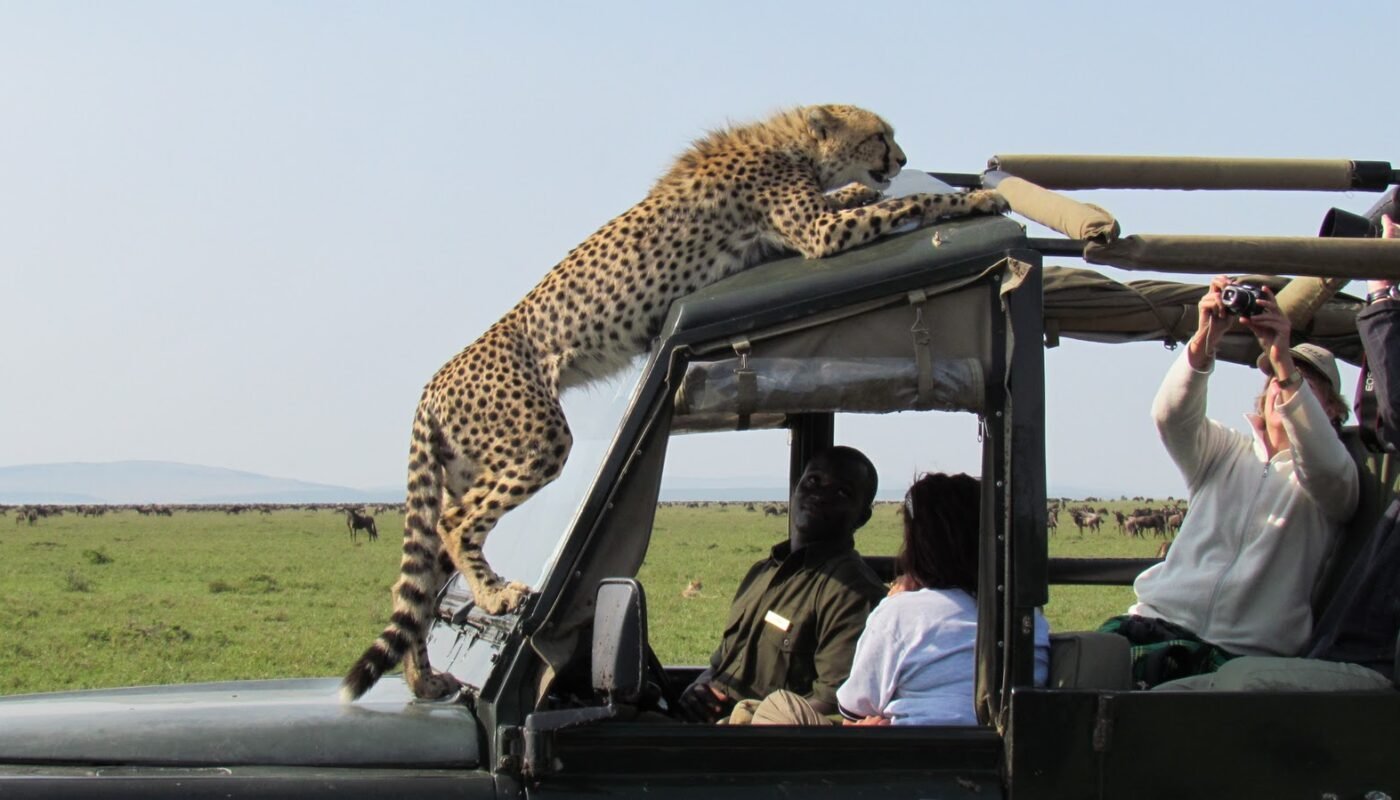Tanzania, the crown jewel of Africa, offers an unparalleled safari experience that draws adventurers, wildlife enthusiasts, and nature lovers from all corners of the globe. Home to iconic landscapes like the Serengeti, Ngorongoro Crater, and Mount Kilimanjaro, Tanzania boasts an incredible diversity of wildlife, including the Big Five. Whether you’re a first-time visitor or a seasoned traveler, a safari tour in Tanzania promises an unforgettable journey through some of the most pristine and vibrant ecosystems on Earth.Tanzania safari tours
In this comprehensive guide, we’ll delve into everything you need to know about Tanzania safari tours, from the best destinations and types of safaris to practical tips and ethical considerations. By the end of this article, you’ll be well-equipped to plan the adventure of a lifetime.
1. Overview of Tanzania Safari Tours
Tanzania is synonymous with safaris, and for a good reason. The country is home to over 25% of Africa’s wildlife, spread across 16 national parks, numerous game reserves, and conservation areas. Tanzania’s diverse landscapes range from the savannahs of the Serengeti to the lush wetlands of Selous Game Reserve, offering varied and rich experiences for every type of traveler.
Why Choose Tanzania for a Safari?
- Incredible Biodiversity: Tanzania is home to an astounding array of wildlife, including the Big Five (lion, leopard, elephant, buffalo, and rhino), over 1,000 bird species, and countless other mammals, reptiles, and insects.
- World-Renowned National Parks: The Serengeti and Ngorongoro Crater are two of the most famous safari destinations globally, offering opportunities to witness the Great Migration and encounter predators in their natural habitat.
- Cultural Richness: Tanzania is not just about wildlife; it’s also a melting pot of cultures. Interact with the Maasai, Hadzabe, and other indigenous tribes to gain insight into their traditional ways of life.
- Diverse Landscapes: From the snow-capped peaks of Mount Kilimanjaro to the idyllic beaches of Zanzibar, Tanzania’s landscapes are as varied as they are stunning.
2. Top Safari Destinations in Tanzania
Tanzania offers a multitude of safari destinations, each with its own unique charm and wildlife experiences. Here’s a closer look at some of the most popular ones:
a) Serengeti National Park
The Serengeti is perhaps the most famous safari destination in Africa, known for its endless plains and the dramatic Great Migration. Every year, over two million wildebeest, zebras, and gazelles migrate across the Serengeti in search of fresh grazing, followed closely by predators like lions, cheetahs, and hyenas.
- Best Time to Visit: June to October (for the Great Migration and predator sightings)
- Key Attractions: The Great Migration, Big Five, Balloon Safaris, Predator-Prey Interactions
b) Ngorongoro Crater
Often referred to as the “Eighth Wonder of the World,” the Ngorongoro Crater is the largest inactive volcanic caldera on the planet. This UNESCO World Heritage Site is a haven for wildlife, with dense populations of elephants, lions, hippos, and even the elusive black rhino.
- Best Time to Visit: Year-round, though the dry season (June to October) offers better wildlife viewing.
- Key Attractions: Big Five, Crater Rim Views, Maasai Villages, Black Rhino
c) Tarangire National Park
Tarangire is a hidden gem in Tanzania, often overshadowed by the Serengeti and Ngorongoro. However, it offers a quieter, more intimate safari experience, with large herds of elephants, ancient baobab trees, and diverse birdlife.
- Best Time to Visit: June to October (dry season)
- Key Attractions: Elephant Herds, Baobab Trees, Bird Watching, Walking Safaris
d) Selous Game Reserve
Selous, the largest game reserve in Africa, is a remote and pristine wilderness area, offering a more off-the-beaten-path safari experience. It’s ideal for those seeking a less commercialized and more authentic adventure.
- Best Time to Visit: June to October (dry season)
- Key Attractions: Boat Safaris, Walking Safaris, Wild Dog Sightings, Remote Wilderness
e) Ruaha National Park
Ruaha is Tanzania’s largest national park and one of its best-kept secrets. It’s known for its dramatic landscapes, including rocky outcrops, baobab forests, and the Great Ruaha River, which attracts large numbers of elephants, lions, and other wildlife.
- Best Time to Visit: June to October (dry season)
- Key Attractions: Elephants, Lions, Lesser-Known Species (e.g., Greater Kudu), Remote Safaris
f) Lake Manyara National Park
Lake Manyara is a small but scenic park, famous for its tree-climbing lions and large flocks of flamingos. The park is also a great spot for bird watching, with over 400 species recorded.
- Best Time to Visit: June to October (dry season) for large mammals; November to April for bird watching.
- Key Attractions: Tree-Climbing Lions, Flamingos, Bird Watching, Groundwater Forests
3. Types of Safari Tours in Tanzania
Tanzania offers a variety of safari experiences, catering to different interests, budgets, and travel styles. Here are some of the most popular types:
a) Classic Game Drives
The most common type of safari, classic game drives, involve exploring the national parks in 4×4 vehicles. These tours are led by experienced guides who have an intimate knowledge of the wildlife and landscapes, ensuring you have the best possible sightings.
- Ideal For: First-time visitors, wildlife photographers, families
- Duration: Half-day to multi-day tours
- Highlights: Big Five sightings, predator-prey interactions, scenic landscapes
b) Walking Safaris
Walking safaris offer a more intimate and immersive experience, allowing you to explore the bush on foot with a professional guide. This type of safari is perfect for those who want to connect with nature on a deeper level and learn about the smaller details of the ecosystem.
- Ideal For: Adventure seekers, nature enthusiasts, experienced safari-goers
- Duration: 2 hours to full-day walks
- Highlights: Close encounters with wildlife, tracking animals, learning about plants and insects
c) Balloon Safaris
A balloon safari over the Serengeti is a once-in-a-lifetime experience, offering a bird’s-eye view of the vast plains and the wildlife below. These early morning flights provide stunning photo opportunities and are often followed by a champagne breakfast in the bush.
- Ideal For: Romantic getaways, honeymooners, photographers
- Duration: 1-hour flight, followed by breakfast
- Highlights: Aerial views of the Great Migration, sunrise over the Serengeti, unique photo opportunities
d) Night Safaris
Night safaris provide a unique perspective on the African bush, allowing you to see nocturnal animals that are rarely encountered during the day. With a spotlight to illuminate the surroundings, you might spot creatures like leopards, hyenas, bush babies, and aardvarks.
- Ideal For: Experienced safari-goers, wildlife enthusiasts
- Duration: 2-3 hours after dark
- Highlights: Nocturnal wildlife, predators on the prowl, unique sounds of the night
e) Fly-In Safaris
Fly-in safaris involve flying directly into remote and hard-to-reach areas, offering a more luxurious and exclusive experience. These safaris are ideal for those looking to maximize their time in the wilderness while enjoying top-notch accommodations.
- Ideal For: Luxury travelers, time-constrained visitors, those seeking exclusivity
- Duration: Varies (2-14 days)
- Highlights: Remote and pristine locations, luxury camps and lodges, personalized experiences
f) Photographic Safaris
Photographic safaris are tailored specifically for photographers, with a focus on getting the best possible shots of wildlife and landscapes. These tours are often led by professional wildlife photographers who provide guidance on technique and composition.
- Ideal For: Amateur and professional photographers, wildlife enthusiasts
- Duration: Varies (2-14 days)
- Highlights: Optimal lighting and positioning, access to prime wildlife locations, professional photography tips
4. Planning Your Tanzania Safari Tours
Planning a safari in Tanzania involves several key considerations, including the best time to visit, choosing the right tour operator, and preparing for your trip. Here’s what you need to know:
a) Best Time to Visit Tanzania
Tanzania’s climate varies across the country, but generally, the best time to visit is during the dry season, from June to October. During this period, wildlife is easier to spot as animals congregate around water sources, and the vegetation is less dense.
- June to October: Dry season, best for wildlife viewing, cooler temperatures
- November to March: Green season, good for bird watching and calving season, fewer tourists
- April to May: Long rains, fewer tourists, lush landscapes but some areas may be inaccessible
b) Choosing a Safari Operator
Selecting a reputable safari operator is crucial to ensuring a safe, enjoyable, and ethically responsible experience. Look for operators who are members of recognized industry associations, have positive reviews, and prioritize sustainable and community-focused tourism.
- Research and Reviews: Check online reviews, travel forums, and recommendations from previous travelers.
- Experience and Expertise: Choose operators with extensive knowledge of the region and experienced guides.
CONCLUSION
A safari in Tanzania is more than just a journey; it’s a transformative experience that immerses you in the raw beauty and unspoiled wilderness of Africa. From the sweeping plains of the Serengeti to the lush landscapes of Ngorongoro Crater and the remote vastness of Selous, Tanzania offers diverse and unforgettable encounters with nature. - Whether you’re seeking the thrill of witnessing the Great Migration, the serenity of a balloon safari at sunrise, or the intimacy of walking safaris in the bush, Tanzania caters to all types of adventurers. Its rich cultural heritage, incredible biodiversity, and commitment to conservation make it a top destination for those looking to connect with the natural world.
- As you plan your Tanzania safari, remember to choose a responsible tour operator who prioritizes sustainable practices and supports local communities. By doing so, you’ll ensure that your journey not only enriches your life but also contributes to the preservation of Tanzania’s unparalleled natural heritage for future generations.
- Embark on a safari tour in Tanzania, and let the wild heart of Africa captivate your spirit. The adventure of a lifetime awaits!

